12 Interesting & Fun Donkey Facts
This post may contain affiliate links that earn us a commission at no extra cost to you.
Discover some of the most fun and interesting donkey facts for adults and kids – and visit one special donkey sanctuary that we enjoyed.
Although not native to Aruba, we visited our first-ever donkey sanctuary on the gorgeous Caribbean Island.
While donkeys have been a part of Aruba for over 500 years, in 1970, illness almost wiped them out of the country.
Today, surviving donkeys still face risks of injury or death from increased car traffic along with neglect and abuse.
The Aruba Donkey Sanctuary specifically houses, protects, and cares for a plethora of wild donkeys. While we visited, we wanted to know all of the fun facts about donkeys.
How big can they get? What’s the smallest donkey? Do they like people? And how about those big ears?
Below, we are sharing just a few of the most interesting facts about donkeys, including the difference between a donkey and a mule, how long donkeys live, and the furriest breed alive.
Let’s get started!
P.S. Afterward, learn more about our visit to the donkey sanctuary in Aruba.

12 Amazing Donkey Facts For Adults & Kids
By Jeremy Paterson
Photos from Christine & Tom’s visit to the Aruba Donkey Sanctuary
1. The biggest donkey is currently 17 hands
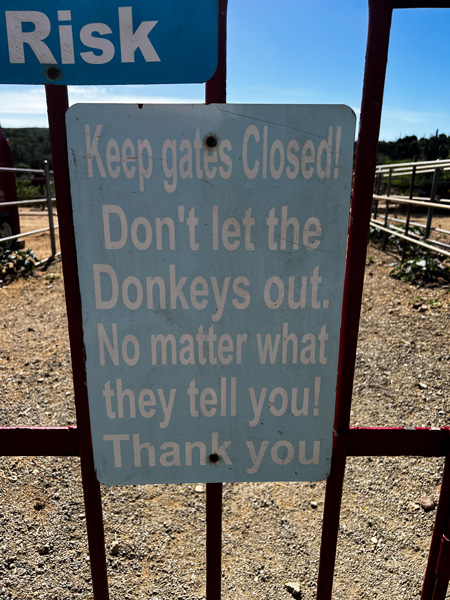
How big is the world’s biggest donkey?
When talking about animal facts, size is always a huge (haha) factor, so our fun donkey facts trail begins with the biggest one.
Back in 2013, a donkey named Romulus was measured for the Guinness Book of World Records, and he came in at 17 hands, otherwise known as 5’6’’ at the front shoulder.
This means that Romulus (or “Rom” as he’s known to his friends) was then deemed the World’s Tallest Donkey.
Romulus’ breed, the American mammoth jackstock donkey, happens to be the world’s largest donkey breed, which may have helped him take the title.
If you’re after bonus facts about donkeys, Romulus and his donkey brother, Remus, were named after the two brothers who founded the city of Rome, according to legend.
Remus himself was just beaten by his brother to the world record, measuring only a (still impressive) 16.2 hands, or a couple of inches smaller.
They each weigh around 1,300 pounds and live near Adrian, Michigan.
2. The smallest donkey is barely two feet tall
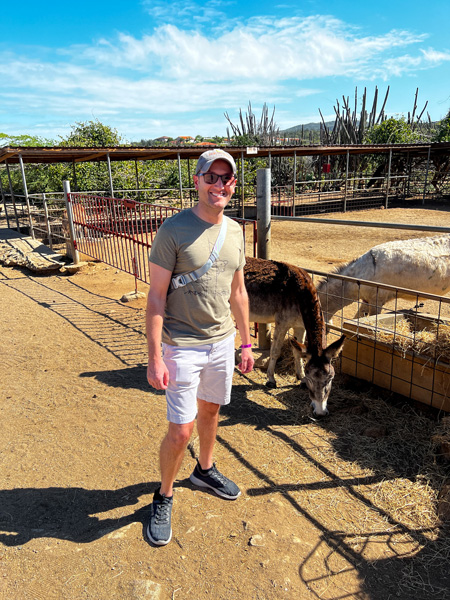
How small is the world’s smallest donkey?
Let’s look at the other – some would say cuter – end of the donkey facts spectrum. For that, we’re looking at another American donkey, this time from Gainesville, Florida.
Instead of being named after Roman folklore, this little donkey is named KneeHi because he is, quite literally, very small.
In fact, he’s only 24.29 inches tall at the shoulder – that is smaller than a lot of everyday dog breeds!
Like Romulus, KneeHi is also a Guinness World Record holder. Unlike Romulus, KneeHi is not an American mammoth jackstock; instead, he is a miniature Mediterranean donkey.
3. Donkeys are very social
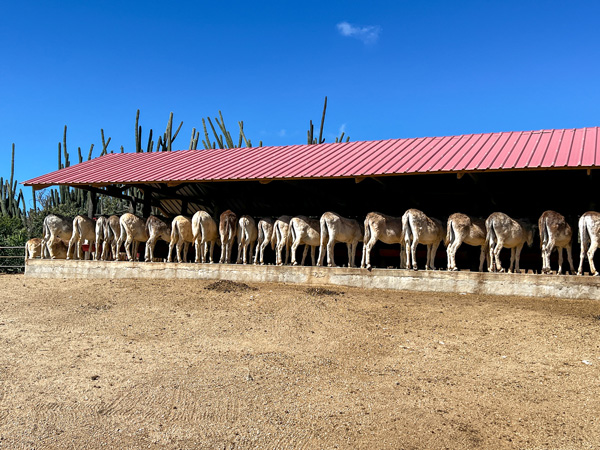
Studies in animal behavior have shown that donkeys not only like to hang out together, but that it’s essential for their mental health.
Not only do they gravitate towards groups, but donkeys also create pair bonds with a specific donkey friend.
So if these fun facts about donkeys make you want to go out and get a pet donkey, make sure to get two!
4. Donkeys have been working for humans for a long time
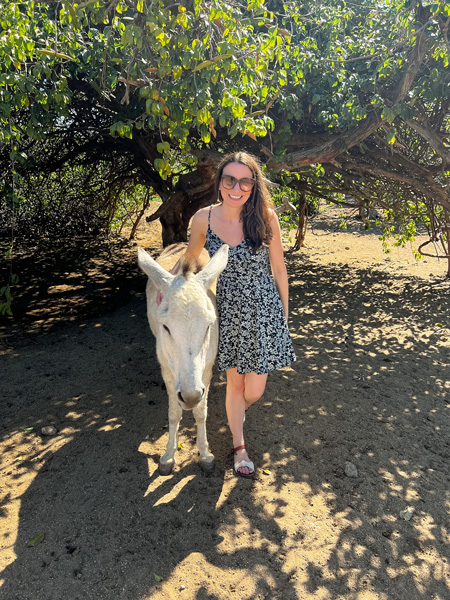
Humans first domesticated donkeys around 6,000 years ago. That’s around about the same time as the Bronze Age, and when writing was beginning to be invented.
Originally they were used for meat and milk – not one of the kinder donkey facts, we know – but over time the donkey’s practical nature made sure they were kept around for longer.
For example, donkeys were used on the Silk Road, to transport goods for thousands of miles from the Pacific to the Mediterranean.
5. Donkeys have large ears for a couple of reasons
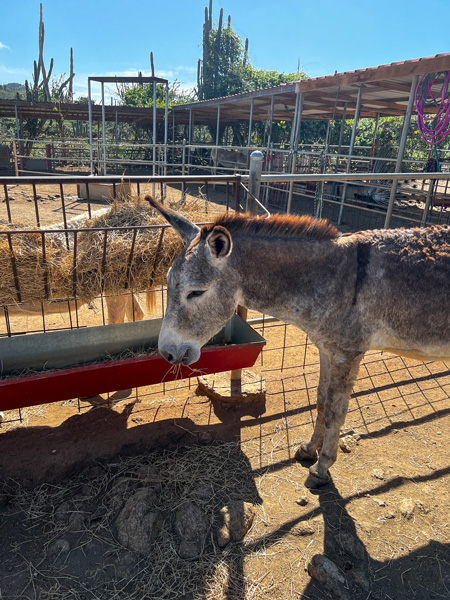
The natural habitat of the donkey is wide open spaces, which means they need to have exceptional hearing; this, of course, equates to big ears!
Having evolved in arid places across the world, especially in Asia and Africa, donkeys have had to rely on their hearing in order to locate other donkey herds.
This also helps when trying to avoid the predators that populate those areas.
But there’s another practical element to a donkey’s ears: their big ears help them cool down.
Those wide open spaces might become incredibly hot, which is a problem for hairy animals like donkeys.
By having longer ears that flick and move around, more air can get to them and cool the blood running through them. This action also allows donkeys’ heat to dissipate faster.
This same concept applies to elephants, who flap their even larger ears in order to keep cool under the hot sun!
6. Donkeys live for quite a long time
One of the best facts about donkeys is their longevity.
A pet dog or cat will keep you company for a good 10 or 15 years, sometimes longer, and horses usually live up to 25-30 years.
But donkeys have them all beat because donkeys can live for over 50 years!
The world record for oldest donkey goes to Suzy from Glenwood, New Mexico, who lived to the ripe old age of 54.
7. One breed of donkeys is much hairier than the rest
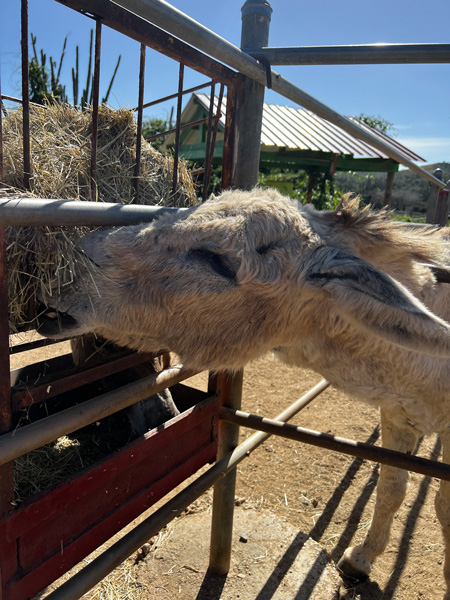
Fortunately for this breed of donkey, they didn’t originate in deserts or dry areas or they’d probably not have lasted too long.
By far, the hairiest donkeys are the Poitou donkeys from the French Poitou region.
These fascinating animals have really long coats with thick strands of hair. The longer and more tangled a Poitou donkey’s coat is, the more value it has in the eyes of its owners.
Poitou donkeys were widely used in 18th-century Europe, but by the late 1970s, they were in massive decline.
But one of the more positive and interesting facts about donkeys is that since then their numbers have been on the rise again!
8. Donkeys are one of the most stubborn animals
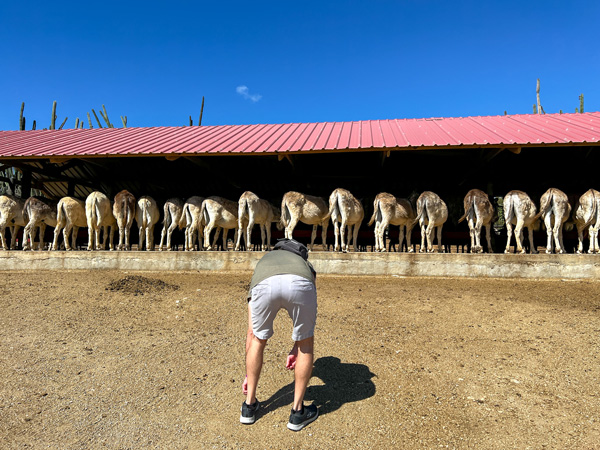
You might have heard the phrase “stubborn as a mule.” One of the more unique donkey facts is that mules get it from their donkey parents.
Donkeys have a strong sense of self-preservation; if a donkey feels like it’s about to be made to do something dangerous, or encounter a dangerous creature, it will stand its ground.
This is in stark contrast to their larger horse cousins, who are flight animals that will bolt at very little provocation.
9. Donkeys learn domestication from positive reinforcement
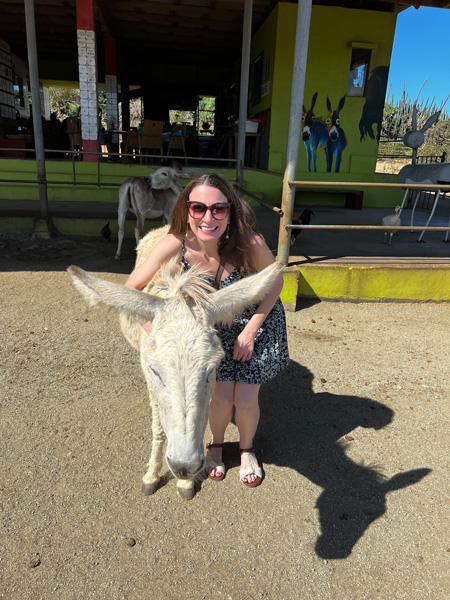
This is one of the most important facts!
Rather than learning from being dominated or corrected, donkeys learn from humans that they can trust.
If a person shows a donkey that it will keep it safe from harm, it will take up tasks much easier than if forced.
10. The donkey bray is a unique sound
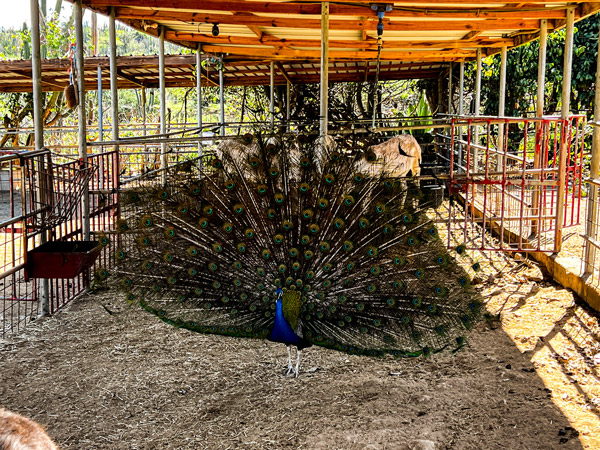
Ever wondered why a braying donkey is so easily recognizable? It’s because there’s not really anything exactly like it.
A donkey can hear another donkey’s bray from up to 60 miles away, which is one of the more amazing facts about donkeys!
11. Donkeys are incredibly smart
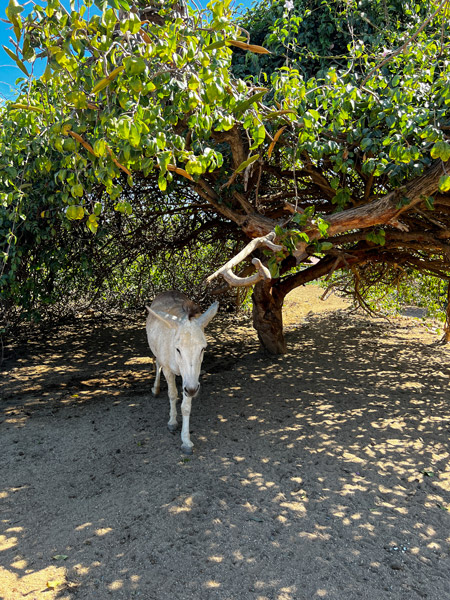
Don’t underestimate a donkey’s intelligence!
Despite some common misconceptions that donkeys are slow, simple-minded beasts, donkeys are actually very clever and also extremely fast learners.
Scientists have found that donkeys can problem-solve as quickly as dogs and even dolphins.
One of the more interesting donkey facts is that they can also recognize faces if you spend enough time with them – something donkeys and smartphones have in common!
12. Donkeys are not horses… or mules
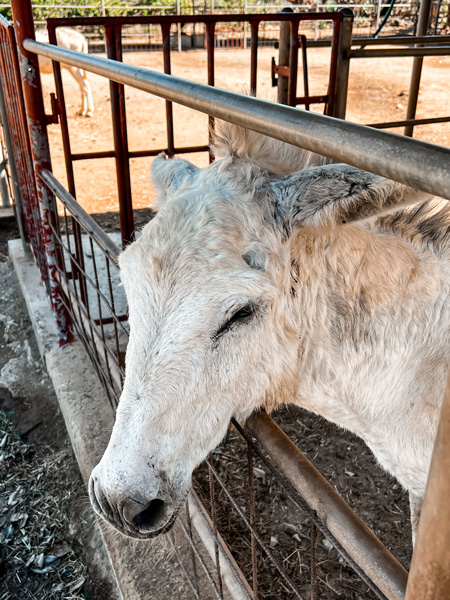
It may be tempting to think that donkeys are just small horses, but they’re not.
In fact, they are a completely different species – they just happen to come from the same overall family: Equidae.
Donkeys are also not mules; mules are a third, separate species.
When you breed a horse and a donkey together, you get a mule! Specifically, you need to breed a male donkey with a female horse.
If you try the other way around, you get a hinny instead.
There are lots of different terms for different kinds of donkeys and donkey variants. Male donkeys are called jacks, and female donkeys are called mares, jennys, or sometimes jennets.
One of the interesting facts about donkeys is that their names change as they get older. If your donkey is under 4 years of age, it’s called a colt if it’s male or a filly if it’s female.
Save Your Favorite Facts About Donkeys For Later:
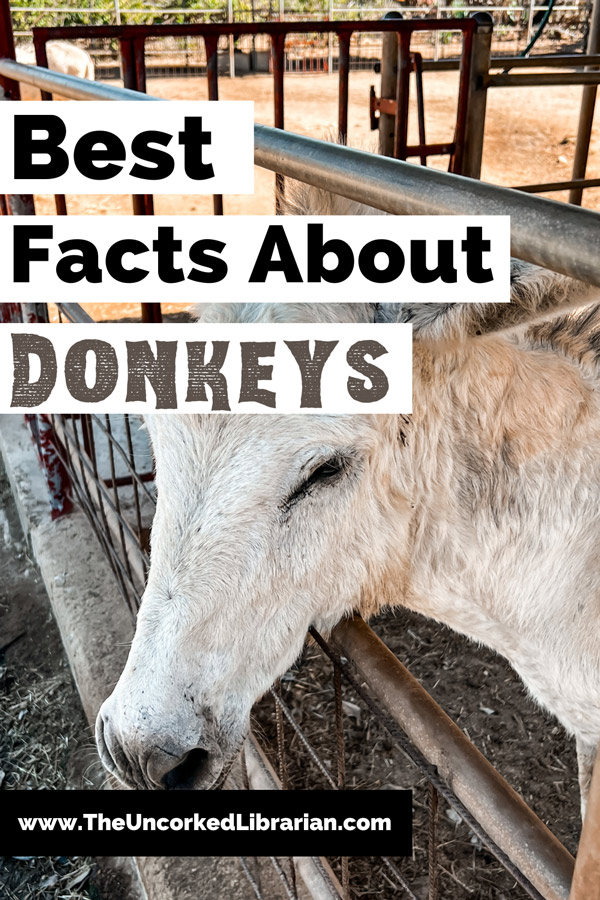
What fun facts about donkeys do you know?
Did we answer all of your donkey questions? What more do you want to know?
And, do you have any more interesting facts about donkeys to share? Let us know in the comments.
P.S. This post was inspired by our visit to the Aruba Donkey Sanctuary, which was one of the most fun things to do in Aruba.
Here, donkeys are well cared for as rescues. Tour the property, learn more about donkeys, and run into a few angsty peacocks.
Afterward, you may also enjoy a visit to the Aruba Ostrich Farm. Just know that ostriches aren’t quite as friendly as donkeys.
Explore all of our Aruba Travel Guides.
More Cool Facts About Animals:
Ostrich Facts
Black Bear Facts
Animal-Themed Book Lists:
Books With Cats
Famous Literary Dogs
Books With Dogs
